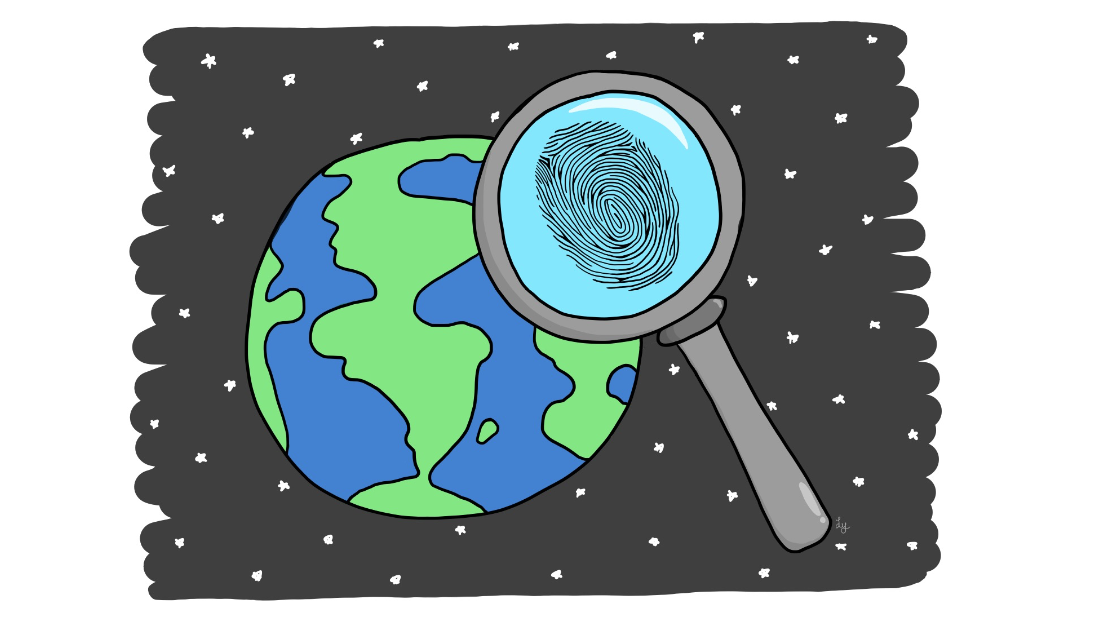Scientists believe that planets outside of the solar system capable of supporting life should look a lot like Earth. The theory posits that if the chemical components comprising Earth’s atmosphere can be found in that of distant planets, those worlds could harbour similar carbon-based life-forms.
This summer, two McGill University astronomers put that idea to the test, assembling a ‘fingerprint’ for Earth that could be used to identify exoplanets—planets beyond our solar system—capable of supporting life.
“Our goal was to make a transit spectrum for Earth to see what it would look like if it were an exoplanet,” Evelyn MacDonald (B.Sc. ‘19), author of a newly published study on the topic, said in an interview with The McGill Tribune.
MacDonald, along with her thesis advisor Nicolas Cowan, a professor in the Department of Earth and Planetary Sciences, employed a novel method of molecular chemical analysis to complete the study.
“When a planet […] passes in front of a star the observer does not see the planet, but sees the starlight the planet blocks,” MacDonald said. “The amount of light the planet blocks depends on the wavelength of the molecules in the planet’s atmosphere. By seeing at which wavelengths the majority of light is blocked, we can tell which molecules are in the exoplanet’s atmosphere.”
SCISAT, a Canadian satellite launched in 2003 that uses the principles of light mechanics to identify the concentrations of different gases in Earth’s atmosphere, made the researchers’ work possible.
Working as an interstellar detective, Macdonald was able to recreate the transit profile of Earth by trailing the molecular imprints left by light in the atmosphere. In theory, the profile of a planet that possessed key compounds—primarily carbon dioxide, ozone, and methane—would look similar to the “fingerprint,” or biosignature, that MacDonald created for Earth.
“Based on having found carbon, a sign that a planet has an atmosphere, we could look for other molecules, which together would suggest a planet could have life on it,” MacDonald said.
Two chemicals in particular, ozone and methane, are rarely found together in nature. Astrophysicists are eager to find both molecules independently of one another in a planet’s atmosphere, because life-forms could be producing these gases.
“It’s much harder to know for sure what is causing a particular process in a planet’s atmosphere, or rather what causes certain molecules to even be there,” MacDonald said. “But [the presence of such molecules] would definitely be a reason to keep observing that planet.”
Using Macdonald’s findings as a baseline, researchers can now explore the observable universe for comparable biosignatures of planets in the habitable zone of stars other than the sun.
The publication of the study comes at a pivotal time in humanity’s search for habitable worlds beyond the solar system. The James Webb Space Telescope (JWST), the planned successor to the Hubble Telescope, is due to launch into orbit in 2021. The JWST will allow for improved resolution and sensitivity in astronomical imaging, presenting space scientists with the opportunity to look deeper into the darkest bowels of the universe.
“New technology is key for scientists to analyze the plethora of data such a satellite will present,” Cowan said. “The interpretation of this kind of data is really hard. You see some wiggle on a spectrum and maybe you convince yourself that there is detectable ozone, but are you willing to say [that] there is life on that planet?”
For planetary scientists, the next decades of research will attempt to answer this central question. Until then, Earth remains the only planet within the 93 billion light year-wide universe that is known to contain life.










Awesome graphic! I will use it in future talks (with attribution).
The James Webb Space Telescope won’t exactly be in orbit, as in orbit round the Earth; it will be stationary at a Lagrange point. In orbit around the Sun, maybe?